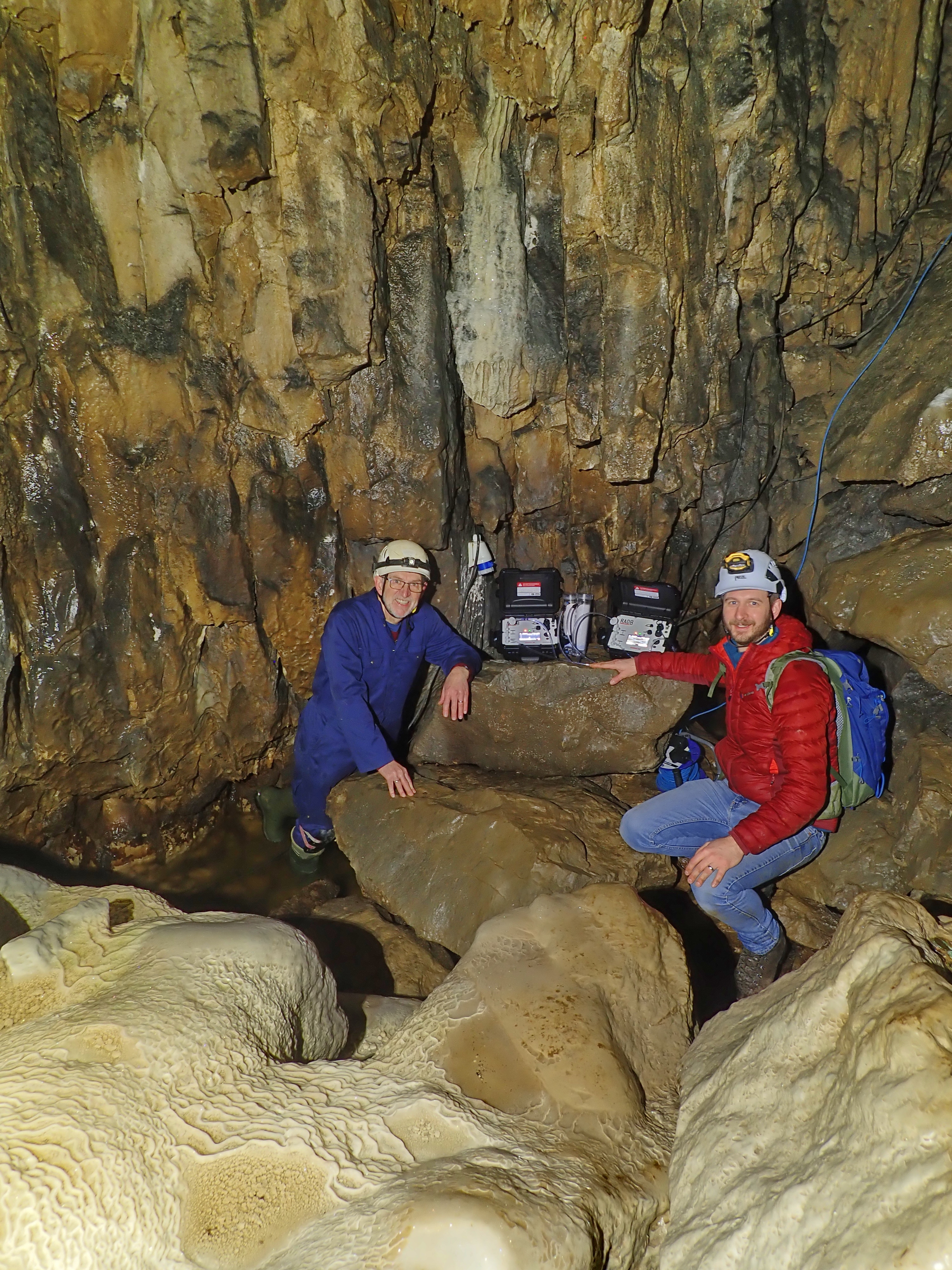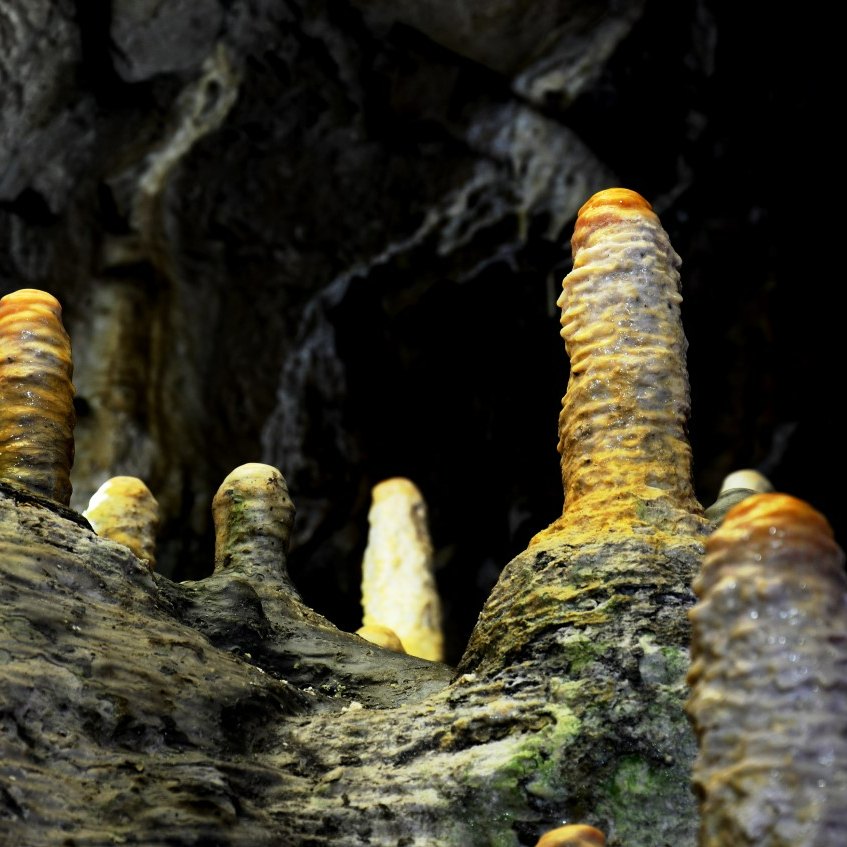22/12/2024: Radon water sample experiment launch

31/08/2024: Leachate Experiment by Michael Rogerson of Northumbria University, Newcastle.
Caves are the one thing that has consistently interested me and a very inconsistent research career which has taken me from the northern Pacific to the Sahara and from how single celled bugs on the ocean floor recover from submarine avalanches to recovering e-tech elements we need for the energy transition from piles of waste left over from our industrial history. One of the problems that has diverted my attention over the years is managing the bleach-like water that leaks out of old steel and limes works more effectively. Poole’s Cavern is a pretty compelling place for me – where else can you see really bleach-like water in a cave? In Poole’s, this water makes drips which make really fast-growing stalagmites which often have distinct colours. You’ll see them best at the Poached Egg Chamber about two thirds of the way through the tour.

Image: Poached Eggs
This isn’t just fuel to my curiosity though, the fact we can see this alkaline (bleach-like) water there is important. We have industrial residues all over our uplands, left over from mining and metal working industries of previous generations. Rainwater gets into them, and passes through them, and become a problem when it comes out again. Coal mine tips make acid drainage, and lime tips make alkaline leachates. At Poole’s, it is the old lime tips up on Grin Low which are the cause. If the water comes out on the surface, it might damage a region or pollute a river. But what if it passes into the groundwater? This is so much more difficult for us to monitor, and we consequently know much less about what it does.
I have been sampling the alkaline drips at the Poached Egg Chamber for a couple of years now, trying to get a handle on what happens to alkaline leachate when it goes down into groundwater. We’re beginning to learn how the leachate interacts with the limestone bedrock, but more importantly how the leachate changes with the weather. Because it is not always getting into the cave – it looks like there needs to be a bit of surplus water in the soil before you see it, which generally means more gets in in the winter and less in the summer. That might be a really important finding, because that linkage of rain and season is probably also true for lots of other sites all over the UK, and worldwide.

Image: Autosampler
Science is a demanding thing to do sometimes, and our next step has to be to test whether what we think is happening is really happening. To do that, we’ll be setting up an “autosampler” – basically a small robot water sampler – to take a sample of the affected drip in Poached Egg every day. You always need a “control” for an experiment, so I also need a sample every day from a drip which is not affected by the leachate. Sadly, I can’t afford a second robot – but fortunately, the Show Cave Staff will help me out! So they will be taking one sample each day for me during the experiment, before the cave opens up for the day. You really could only do something like this in a special place like Poole’s.
So watch this space! It will take until the spring to complete the experiment, but hopefully by then we will know a whole lot more about how our industrial past interacts with our weather to affect the quality of our groundwater.








